
Maple syrup, with its rich, distinctive flavor, is a beloved natural sweetener used in everything from classic pancakes, french toast and waffles to salad dressings and baking recipes. However, there are times when you might find yourself without this golden delight or simply looking for a healthier or different flavor profile in your cooking. Fear not! There are numerous maple syrup substitutes that can fill in admirably, whether you’re after a similar taste or just need a sweetener that fits what you have on hand.
What is Maple Syrup
Maple syrup is a natural sweetener made from the sap of maple trees, primarily found in the northeastern United States and Canada. The sap is collected in the early spring, then boiled down to reduce its water content and concentrate its sugars, resulting in a thick, golden syrup.
What Does Maple Syrup Taste Like
Maple syrup is known for its distinctive flavor, which can range from subtly sweet to richly complex, depending on the grade. It’s a popular topping for pancakes and waffles, and is also used in baking, cooking, and in making salad dressings and marinades.
Is Maple Syrup Healthy?
Unlike refined sugars, maple syrup contains vitamins, minerals, and antioxidants, making it a healthier sweetening option.
Suggested: Is Maple Syrup Gluten Free? Find Out Here
How Maple Syrup Is Made
Maple syrup is made through a process that begins in late winter to early spring, when the sap starts to flow in maple trees. Here’s a brief overview of the steps involved:
- Tapping the Trees: Small holes are drilled into the trunks of maple trees, and spouts are inserted to collect the sap. Buckets or plastic tubing system are used to gather the sap as it drips out.
- Collecting the Sap: The sap is collected from the trees over the course of several weeks, usually when nighttime temperatures are below freezing, and daytime temperatures are above freezing, stimulating sap flow.
- Boiling the Sap: The collected sap, which is about 98% water, is transferred to a sugar house where it is boiled in large evaporators. The boiling process evaporates the water, concentrating the sap into syrup. This requires a large amount of sap; about 40 gallons of sap are needed to make just one gallon of maple syrup.
- Filtering: After boiling, the syrup is filtered to remove any impurities.
- Grading and Bottling: The syrup is then graded based on its color and flavor before being bottled. The color and flavor can vary depending on the point in the season when the sap was collected.
This labor-intensive process yields maple syrup, a natural sweetener cherished for its unique flavor and culinary versatility.

The Best Maple Syrup Substitutes
Let’s explore the top 10 best replacements for maple syrup, ensuring your dishes maintain their delightful sweetness.
1. Brown Sugar Syrup
Creating a homemade maple syrup alternative is as simple as combining parts brown sugar with water and simmering it over medium heat until it reaches a syrupy consistency. This brown sugar syrup can mimic the rich flavor of real maple syrup and is perfect for pancakes and baking recipes. You can find the full detailed recipe on how to make your own brown sugar recipe here!
2. Honey
Honey is a fantastic substitute for maple syrup due to its natural sweetness and health benefits. Its floral notes bring a different but equally delicious flavor to dishes. Use honey in a 1:1 ratio when substituting for maple syrup in recipes.
3. Agave Nectar
Agave nectar, with its mild, sweet flavor, is an excellent maple syrup alternative, especially in beverages and salad dressings. It’s less viscous than maple syrup but can be used in equal amounts when substituting.
4. Molasses
Molasses, particularly the lighter varieties, can be used as a maple syrup replacement to add a deep, rich flavor to baked goods. It’s thicker and has a stronger taste, so you may want to use it sparingly or in combination with another sweetener.
5. Golden Syrup
Golden syrup is a thick, amber-colored sweetener with a buttery taste. It’s a popular substitute for maple syrup in baking and dessert recipes, offering a similar texture and sweetness level.
6. Corn Syrup
Corn syrup is a versatile syrup substitute that can be used in recipes where a less pronounced flavor than maple syrup is desired. It’s particularly useful in candy making and as a glaze for baked goods.
7. Coconut Nectar
Coconut nectar is a natural sweetener with a rich, caramel-like flavor, making it a suitable maple syrup substitute in recipes. It’s loaded with nutrients and has a lower glycemic index, appealing to health-conscious cooks.
8. Brown Rice Syrup
Brown rice syrup offers a subtle sweetness with nutty undertones, perfect for those looking for a less sweet maple syrup alternative. Its consistency is similar to maple syrup, making it great for baking and as a topping.
9. Simple Syrup
For a quick and easy syrup substitute, mix equal parts sugar and water, then simmer until the sugar dissolves. This simple syrup is a blank canvas that can be flavored with vanilla or maple extract to bring it closer to maple syrup’s taste.
10. Imitation Maple Syrup
While nothing beats the taste of real maple syrup, imitation maple syrup, often labeled as “pancake syrup”, can be used in a pinch. It’s generally sweeter and has a maple-like flavor, suitable for breakfast dishes and recipes where the maple flavor isn’t the star.
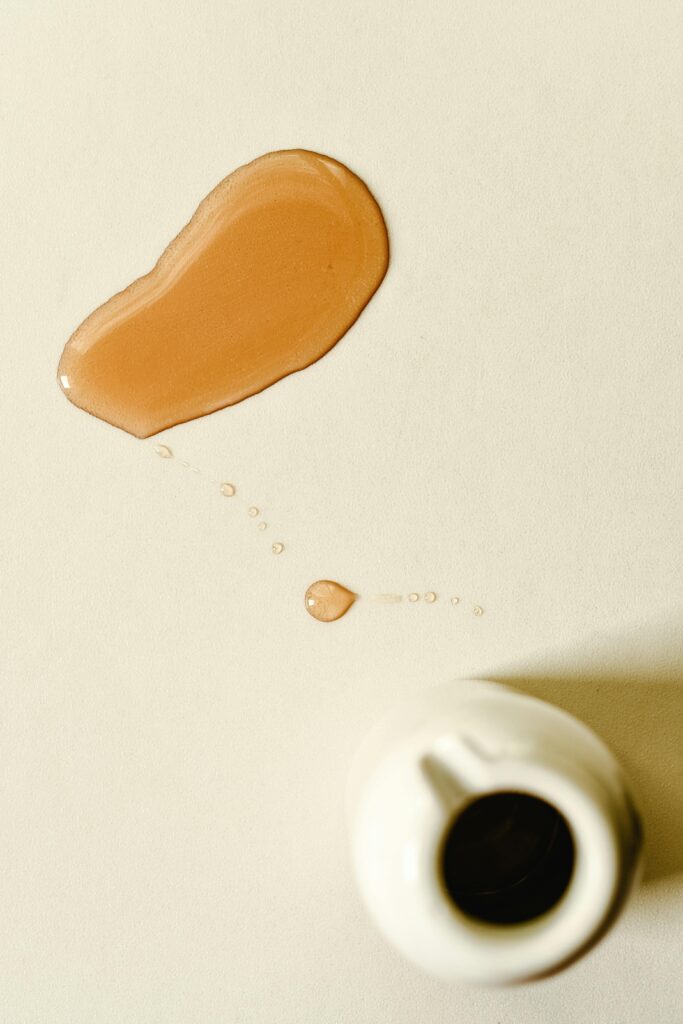
Homemade Maple Syrup Alternative Recipe
Creating a homemade maple syrup alternative is simple and can be a delightful addition to your breakfast table or baking recipes. Here’s a straightforward recipe that captures the essence of maple syrup using easily accessible ingredients:
Ingredients for Homemade Maple Syrup
- 1 cup of granulated sugar
- 1 cup of brown sugar
- 1 cup of water
- 1 tsp of vanilla extract
- 1/2 tsp of maple extract (adjust according to taste)
How to Make Homemade Maple Syrup
- Combine Sugars and Water: In a medium saucepan, mix the granulated sugar, brown sugar, and water. Stir over medium heat until the sugars have completely dissolved. This blend of sugars helps mimic the rich, complex flavor of real maple syrup.
- Simmer: Once the sugars have dissolved, increase the heat and bring the mixture to a simmer. Do not let it boil vigorously. Simmer the mixture for about 3-5 minutes, stirring occasionally. This process will slightly thicken the syrup.
- Add Flavorings: Remove the saucepan from the heat. Stir in the vanilla and maple extracts. The vanilla adds depth to the syrup’s flavor, while the maple extract provides that signature maple syrup taste.
- Cool and Store: Allow the syrup to cool to room temperature. As it cools, it will thicken further. Once cooled, transfer the syrup to a clean glass jar or bottle. Store it in the refrigerator.
- Serve: Use your homemade maple syrup alternative over pancakes, waffles, or use it in baking recipes as you would with real maple syrup.
Tips:
- If the syrup is too thick, you can thin it by adding a little more water and heating it slightly.
- For a unique twist, you can add a pinch of cinnamon or nutmeg to the syrup while it simmers.
- Remember, this syrup contains no preservatives, so it’s best consumed within a month.
Enjoy your homemade maple syrup alternative with the satisfaction of having made it yourself!
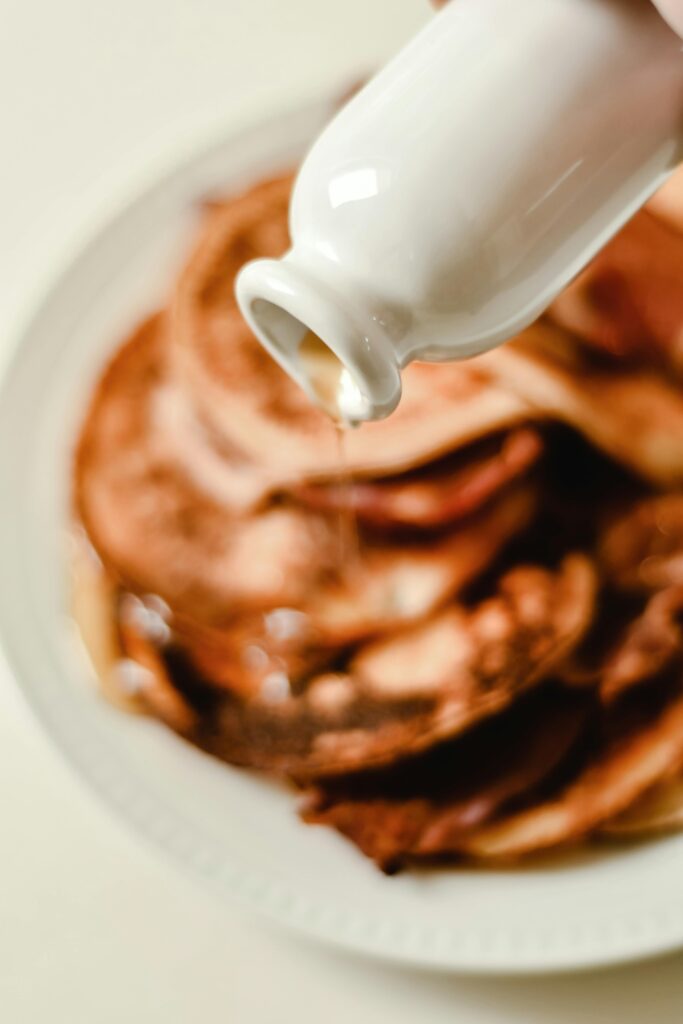
Maple Syrup Substitute FAQs
Is maple syrup better for you than sugar
Yes, maple syrup is generally considered to be healthier than refined sugar. While both are sources of sugar, maple syrup contains some vitamins, minerals, and antioxidants that refined sugar lacks. These include manganese, riboflavin, zinc, magnesium, calcium, and potassium. Maple syrup also has a lower glycemic index than refined sugar, meaning it causes a slower rise in blood sugar levels. However, it’s still high in calories and should be consumed in moderation as part of a balanced diet.
Is maple syrup healthier or honey
Maple syrup and honey both have their health benefits, but they differ in nutritional content and antioxidants. Honey typically has more calories and sugars per serving, but it also contains antioxidants, enzymes, and antibacterial properties not found in maple syrup. Maple syrup, on the other hand, contains more minerals like manganese and zinc. Both are natural sweeteners and healthier than refined sugar, but they should be consumed in moderation. The choice between them depends on personal health goals and dietary preferences.
Maple syrup benefits
Maple syrup offers several health benefits as a natural sweetener. It contains antioxidants and minerals such as manganese, zinc, calcium, potassium, and magnesium, which support immune health and bone strength. Maple syrup has a lower glycemic index than refined sugars, leading to less of a spike in blood sugar levels. Additionally, it provides small amounts of vitamins and protective antioxidants that contribute to overall health. However, despite its benefits, maple syrup is still high in sugar and should be consumed in moderation.
Conclusion
Whether you’re out of maple syrup or looking for a new flavor twist in your dishes, these substitutes ensure you never have to compromise on sweetness. From the deep, caramel notes of coconut nectar to the simple versatility of brown sugar syrup, each maple syrup alternative brings its unique qualities to your recipes. Experimenting with these substitutes not only expands your culinary repertoire but also introduces you to new tastes and textures. So, the next time you reach for that bottle of maple syrup and find it empty, remember that a world of sweet possibilities awaits you. Happy baking and sweet experimenting!
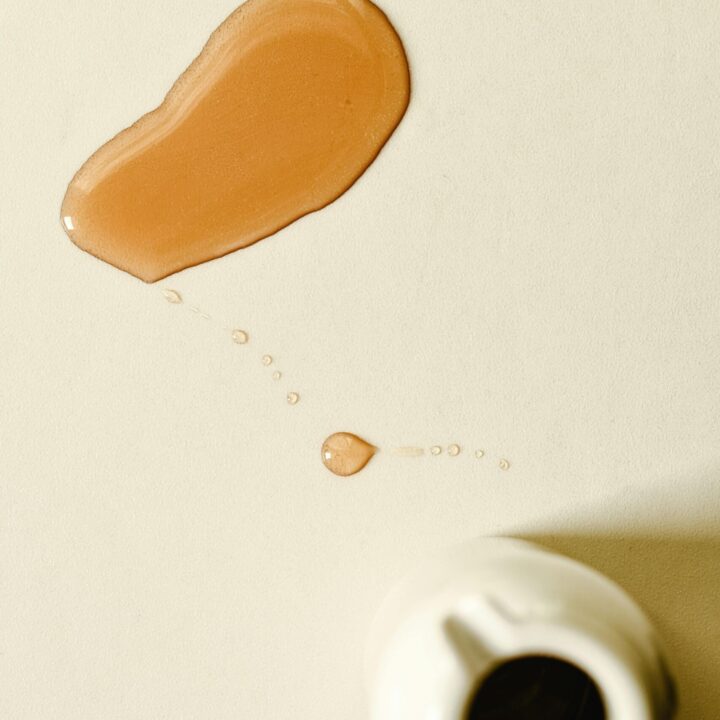
Homemade Maple Syrup Alternative Recipe
- 1 cup of granulated sugar
- 1 cup of brown sugar
- 1 cup of water
- 1 tsp of vanilla extract
- 1/2 tsp of maple extract (adjust according to taste)
Ingredients
- 1 cup of granulated sugar
- 1 cup of brown sugar
- 1 cup of water
- 1 tsp of vanilla extract
- 1/2 tsp of maple extract (adjust according to taste)
Instructions
- In a medium saucepan, mix the granulated sugar, brown sugar, and water. Stir over medium heat until the sugars have completely dissolved. This blend of sugars helps mimic the rich, complex flavor of real maple syrup.
- Once the sugars have dissolved, increase the heat and bring the mixture to a simmer. Do not let it boil vigorously. Simmer the mixture for about 3-5 minutes, stirring occasionally. This process will slightly thicken the syrup.
- Remove the saucepan from the heat. Stir in the vanilla and maple extracts. The vanilla adds depth to the syrup’s flavor, while the maple extract provides that signature maple syrup taste.
- Allow the syrup to cool to room temperature. As it cools, it will thicken further. Once cooled, transfer the syrup to a clean glass jar or bottle. Store it in the refrigerator.
- Use your homemade maple syrup alternative over pancakes, waffles, or use it in baking recipes as you would with real maple syrup.

Christopher is a food and lifestyle expert, recipe developer and the content creator behind May Eighty Five. With years of experience in the kitchen, he also shares tips, tricks and how to’s that he has learnt over the years. Every week, he shares quick, simple and mostly healthy recipes along with some home and entertaining tips. You will find flavorful cocktails, delicious appetizers, tasty mains and some indulgent desserts. As a home decor enthusiast, he also likes to share simple DIY projects and simple tips for a beautiful home.



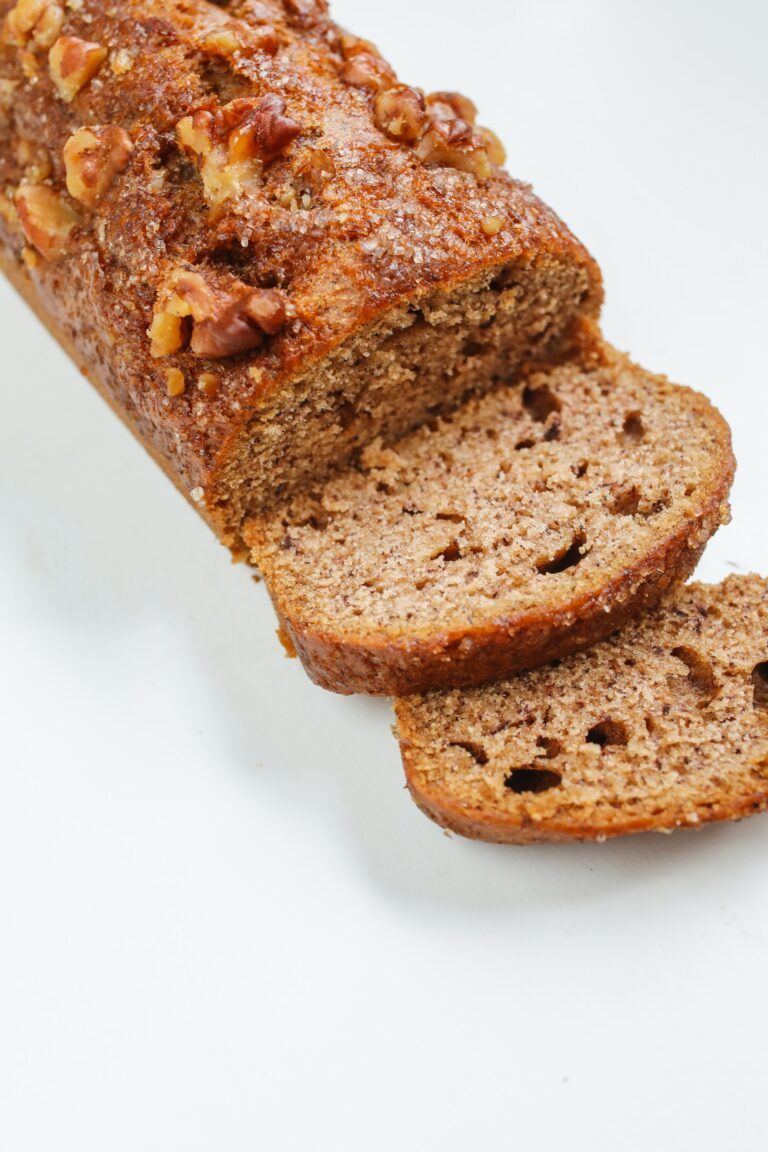
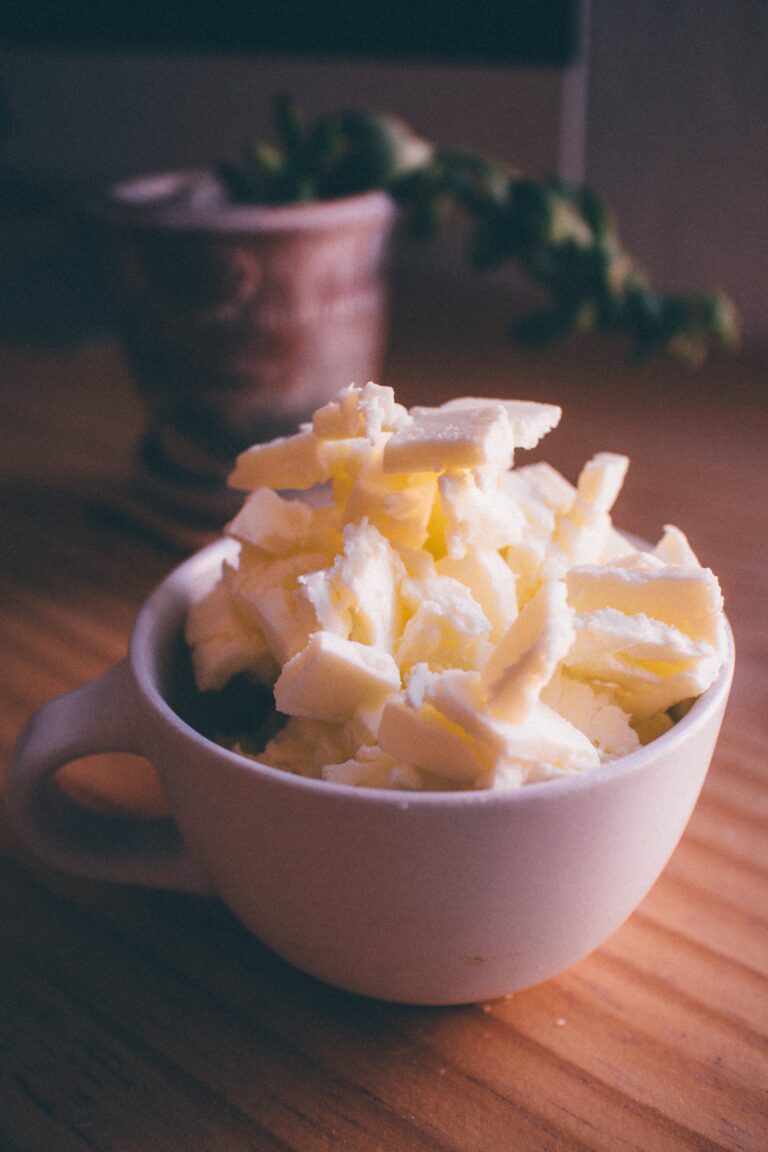
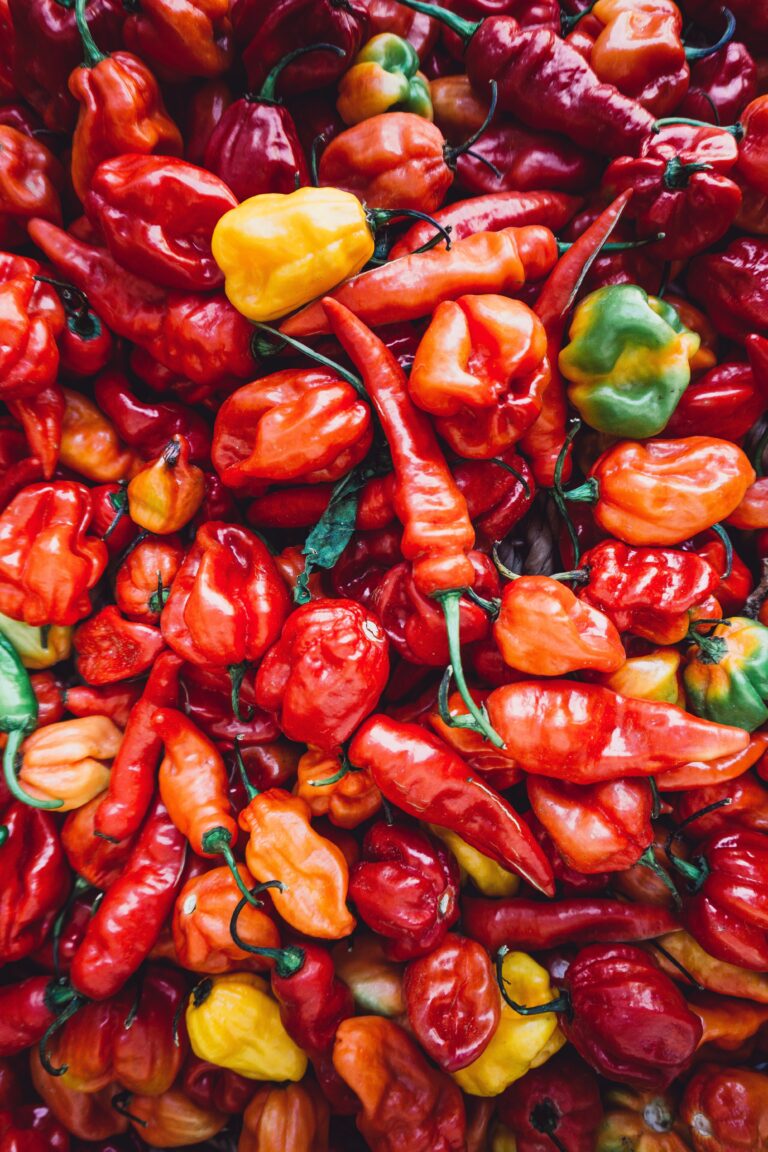
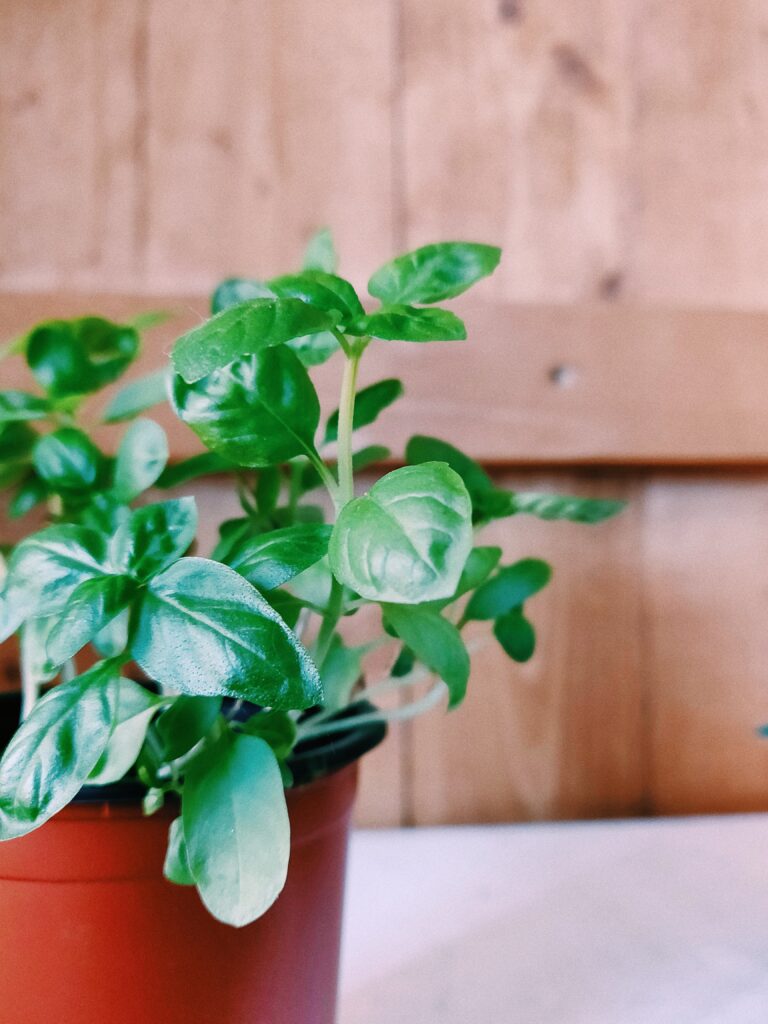

One Comment